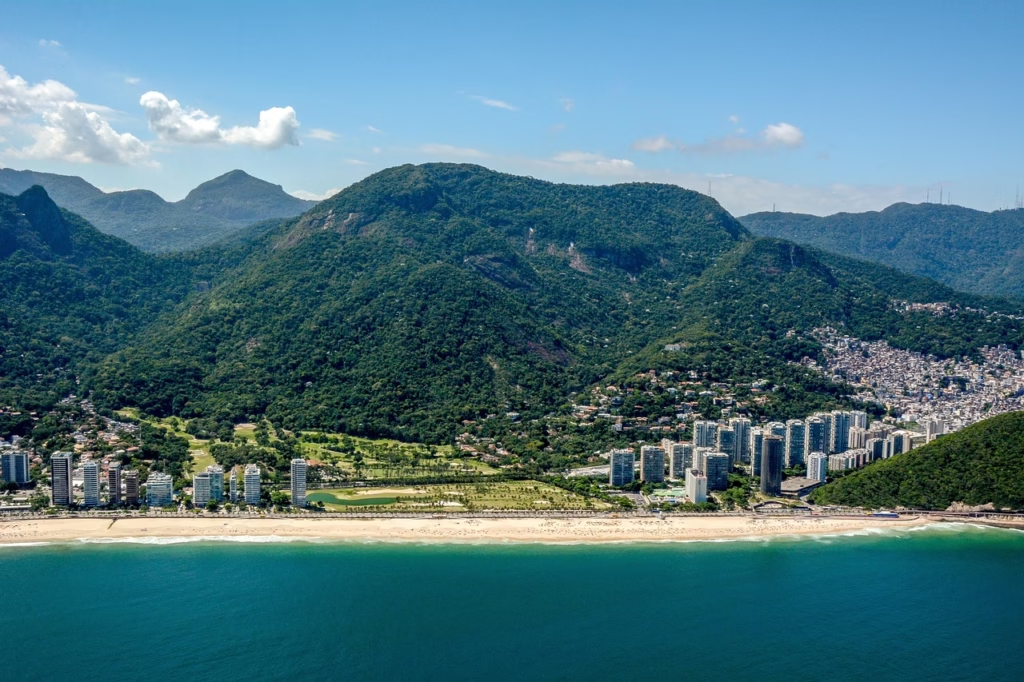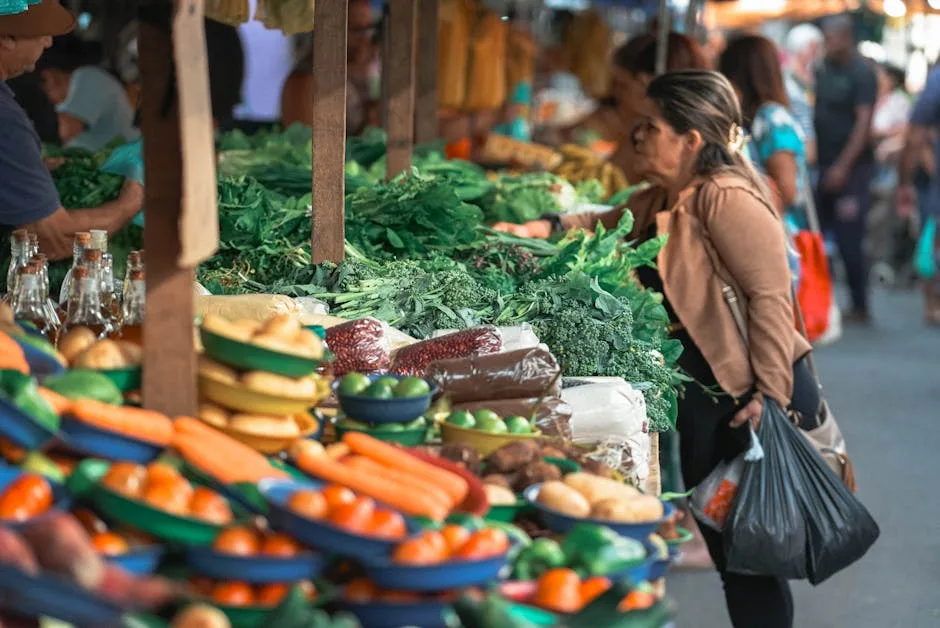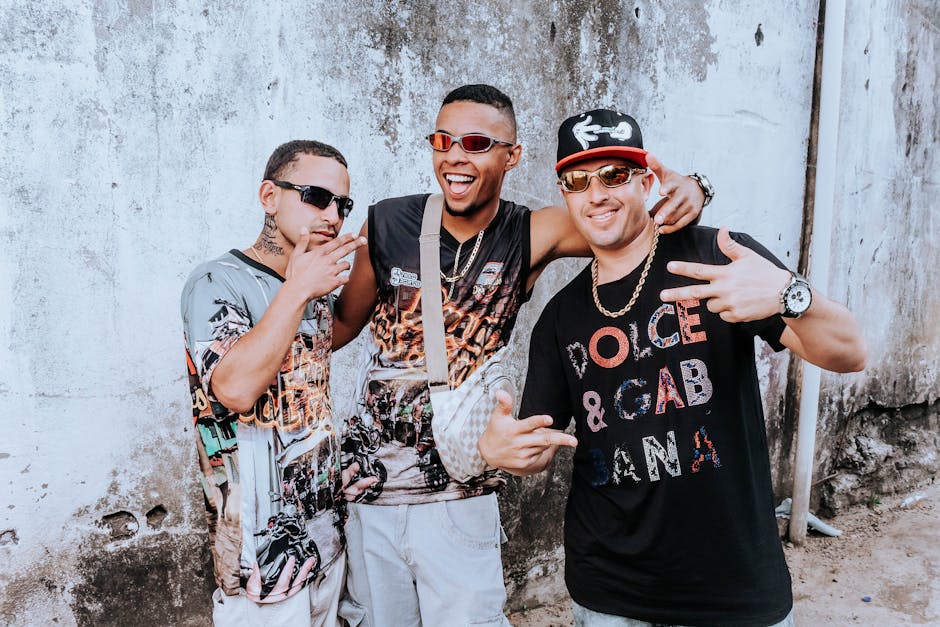Introduction to Rocinha
Rocinha is the largest favela in Brazil, situated in the South Zone of Rio de Janeiro. Nestled between the affluent neighborhoods of São Conrado and Gávea, this community is a striking contrast to the wealth surrounding it. The favela is built on a steep hillside, with narrow alleys and densely packed buildings. Its location not only offers stunning views of the ocean and cityscape but also highlights the socio-economic disparities prevalent in Brazil.
Home to an estimated 100,000 to 200,000 residents, Rocinha exemplifies the complexities of urban living in a rapidly growing metropolis. The population fluctuates due to various factors, including internal migration and economic opportunities, which makes precise estimations challenging. Residents engage in various informal economic activities, demonstrating resilience and adaptability in the face of challenges. Many families have resided in Rocinha for generations, fostering a strong sense of community and belonging.
The reputation of Rocinha extends beyond its size; it is often recognized for its vibrant culture and dynamic social fabric. The community is a hub for art, music, and local cuisine, showcasing Brazilian culture in its many forms. Residents actively participate in community-driven initiatives, addressing issues ranging from public safety to education. Such engagement provides insight into the collective spirit of Rocinha, which thrives despite the adversities that often accompany life in a favela.
Understanding Rocinha’s significance within Brazilian society requires acknowledging its role as both a place of opportunity and a symbol of the ongoing challenges faced by marginalized communities. The juxtaposition of wealth and poverty in Rio de Janeiro is poignantly observed within Rocinha, making it a critical case study for socio-economic discourse in Brazil.
History of Rocinha
Rocinha, located in the heart of Rio de Janeiro, is known today as the largest favela in Brazil, but its origins date back to the early 20th century. Initially, the area was a modest settlement established by rural migrants seeking employment and better living conditions in the urban environment of Rio de Janeiro. The first inhabitants were drawn primarily from the interior of Brazil, where economic hardships pushed them to seek opportunities in the burgeoning city.
As the cityscape transformed and expanded during the 1930s and 1940s, so did Rocinha. The availability of affordable land attracted a growing population, leading to informal housing development. During this time, many families started to construct homes using makeshift materials, resulting in a unique architectural style that characterized the favela. The community began to flourish, fostering its own cultural identity while grappling with challenges related to sanitation and infrastructure.
By the 1960s, Rocinha had evolved significantly, becoming an increasingly dense urban area. The demographic shifts, catalyzed by rural migration, led to diverse social dynamics within the community. Key events, such as the Brazilian military dictatorship (1964-1985), influenced the socio-economic conditions in the favela. Despite facing systemic neglect from the government, residents banded together to establish community organizations aimed at addressing issues like education, health care, and housing rights.
Throughout the late 20th century and into the 21st century, Rocinha continued to adapt to its environment, reflecting broader socio-economic trends in Brazil. The arrival of drug trafficking in the 1980s brought both violence and an economy of sorts, complicating the community’s relationship with the formal city. Today, Rocinha stands as a testament to resilience, embodying a complex history of struggles and triumphs as it navigates the ongoing realities of urban life.
Social Structure and Community Life
Rocinha, as Brazil’s largest favela, showcases a dynamic social structure deeply rooted in communal ties and resilience. The residents of Rocinha, comprising a diverse populace, form a tightly-knit community where relationships are forged through shared experiences and collective challenges. The social fabric of this favela is characterized by strong bonds, often solidified by the socio-economic conditions prevalent in the area. These relationships are not only pivotal for emotional support but also play a critical role in the facilitation of services and resources necessary for daily survival.
One of the primary social institutions in Rocinha is education, which is facilitated through various schools that cater to different age groups. These educational institutions play a fundamental role in shaping the youth and providing them with opportunities for upward mobility. Teachers and local organizations often collaborate to implement programs that engage students in both academic and extracurricular activities, fostering a sense of belonging and community identity. Moreover, the active involvement of families in educational programs further strengthens the ties within the community.
Healthcare facilities, though limited in resources, are another essential component of the social structure in Rocinha. Community health clinics offer basic medical services, while local health workers often engage in outreach programs, emphasizing preventive care and health education. This approach not only addresses immediate health needs but also builds trust between healthcare providers and residents. Through this trust, the community is encouraged to prioritize health and well-being, leading to improved overall health outcomes.
Additionally, community organizations play a vital role in Rocinha’s social life, offering various programs and services that address specific needs such as vocational training, arts, and sports. These organizations serve as hubs for residents to gather, express their creativity, and develop skills for future employment. Collectively, these social institutions contribute significantly to the quality of life in Rocinha, demonstrating the power of community in fostering resilience amidst challenges.
Economy and Employment Opportunities
Rocinha, as Brazil’s largest favela, presents a complex economic landscape characterized by a blend of formal and informal employment opportunities. The vibrant community is home to an array of local businesses that cater to both residents and visitors alike. From street vendors selling food and goods to small shops offering various services, the entrepreneurial spirit in Rocinha is palpable, despite the challenges that residents face. The local economy thrives on these informal sectors, providing essential goods and services while allowing individuals the chance to generate income without needing formal employment contracts.
Many inhabitants of Rocinha engage in various forms of self-employment, leveraging their skills to offer services ranging from hairdressing to tuition and artisanal crafts. Such opportunities contribute significantly to the community’s economy, albeit they often remain unregistered. Lack of access to formal employment can be attributed to several factors, including limited educational resources, unemployment, and economic instability. The informal economy, therefore, serves as a vital lifeline for many families, offering financial sustenance where traditional job opportunities may be scarce.
However, the reliance on informal work presents certain challenges. Workers in Rocinha often lack access to job security, social benefits, and legal protections, rendering them vulnerable to economic fluctuations. Additionally, the stigma associated with informal economies can impede the professional growth of individuals aiming for stable employment. Despite these obstacles, various local initiatives have emerged to support job creation and address the barriers to employment. Community organizations and NGOs are working tirelessly to provide vocational training, financial literacy programs, and mentorship to empower residents to improve their economic situation.
In conclusion, the economic landscape of Rocinha is characterized by a dynamic interplay of informal economies and local businesses, serving both as a source of income and as a challenge for residents seeking stable employment. Addressing these challenges through education and support initiatives is crucial for fostering an inclusive economy that benefits all members of this vibrant community.
Challenges and Struggles
Rocinha, as Brazil’s largest favela, is emblematic of numerous challenges that accompany urban informal settlements. One of the most pressing issues is poverty, which afflicts a considerable portion of its residents. Many inhabitants rely on informal employment or underpaid jobs, limiting their financial stability and access to essential services. This chronic economic struggle compounds the difficulties faced by families and drives some individuals towards illicit activities as a means of survival.
The impact of crime is another significant challenge within Rocinha. High rates of violence, including gang conflicts, pose a serious threat to the community’s overall safety. These issues often stem from the intersection of poverty and a lack of educational and economic opportunities. The prevalence of drug trafficking further exacerbates instability, leading to entrenched cycles of violence that hinder not only personal safety but also the potential development of the area as a whole.
Infrastructure in Rocinha presents additional hurdles for the residents. Due to the rapid expansion of the favela, many areas suffer from inadequate housing, insufficient sanitation systems, and limited access to clean water. The steep hillsides and narrow alleyways complicate emergency services, leading to response delays during critical situations. Local governmental efforts to address these infrastructure deficits face setbacks, often due to budget constraints and bureaucratic challenges. Nevertheless, community initiatives have emerged, showcasing resilience among residents. Various grassroots organizations strive to improve living conditions through projects focused on education, health, and local economic development, aiming to uplift the quality of life for those in Rocinha.
Overall, the residents of Rocinha confront multifaceted challenges that significantly impact their daily lives. While efforts are being made to improve the situation, the road ahead remains arduous, requiring concerted actions from both the community and authorities to foster meaningful change.
Cultural Significance of Rocinha
Rocinha, often recognized as Brazil’s largest favela, serves as a vibrant hub of culture that elucidates the resilience and spirited nature of its community. Music is integral to the identity of Rocinha, with genres such as samba and funk prominent in local gatherings and celebrations. These musical expressions not only provide entertainment but also convey the stories, struggles, and hopes of the residents. Artists from Rocinha have gained national and international recognition, bringing the unique sound of funk carioca to a broader audience, thus highlighting the creativity that thrives within the favela.
Beyond music, art plays a significant role in expressing the cultural identity of Rocinha. Street art and mural paintings adorn the walls throughout the community, transforming the landscape into a vibrant gallery that tells the narratives of its inhabitants. Local artists often use their work to comment on social issues, celebrate cultural heritage, and inspire change, serving as both a form of expression and activism. The collaboration between artists not only beautifies the environment but also fosters a sense of unity and pride among the community members.
Festivals are another essential aspect of Rocinha’s cultural fabric. Events such as the annual Carnival celebration bring together residents of all ages, showcasing traditional dances and colorful parades. These festivals serve as a platform for individuals to connect, share their heritage, and celebrate their community’s spirit. In addition, they provide a much-needed opportunity for social cohesion, enabling residents to momentarily escape the challenges of daily life while reaffirming their cultural identity.
Through music, art, and festivals, Rocinha exemplifies how creativity flourishes within challenging environments, ultimately reinforcing the identity of its residents as more than just individuals living in a favela. The richness of this cultural tapestry underscores the importance of Rocinha in Brazil’s broader social landscape, highlighting its contributions to the nation’s artistic and social heritage.
Tourism in Rocinha
The emergence of Rocinha as Brazil’s largest favela has captured the attention of tourists from around the world, marking a significant shift in the perception of favelas as destinations for exploration. While the allure of experiencing local culture and the vibrant community life attracts many visitors, it is essential to analyze the implications of this tourism on local residents and the broader favela ecosystem.
Tourism in Rocinha presents various advantages, primarily by contributing positively to the local economy. Tour operators often collaborate with residents to guide visitors through the favela, ensuring that a greater portion of the profits remains within the community. This economic boost can lead to improvements in infrastructure, educational resources, and local businesses, fostering a more sustainable lifestyle for residents. Moreover, it creates opportunities for cultural exchange, allowing tourists to gain insight into the realities of favela life, which contrasts sharply with Brazil’s more affluent urban areas.
However, the growing trend of tourism also raises ethical concerns and can sometimes lead to unintended consequences. Critics argue that it can commodify the hardships faced by favela residents, reducing complex social issues to mere curiosities for sightseeing. This dynamic may lead to an erosion of community values as the influx of tourists alters the daily rhythms of life in Rocinha. Furthermore, the potential for exploitation arises when businesses prioritize profit over community welfare, putting residents at risk of displacement or cultural dilution.
In balancing the benefits and drawbacks of tourism in Rocinha, it is crucial for stakeholders to engage with the local community actively. Ensuring that tourism is conducted ethically and respectfully can help preserve the rich culture of Rocinha while fostering positive economic growth and community resilience.
Government and NGO Involvement
Rocinha, Brazil’s largest favela, has seen considerable involvement from both government entities and non-governmental organizations (NGOs) aimed at enhancing the living conditions of its residents. The complexity of the favela’s socio-economic issues necessitates a collaborative approach to development, where various stakeholders join forces to address challenges. One significant initiative has been the establishment of public programs focused on education and social services that cater to the community’s unique needs.
Local government efforts have included the implementation of social housing projects and infrastructure improvements that help in providing basic amenities such as sanitation, paved roads, and public transportation. These developments are essential in improving the overall quality of life for residents, as they facilitate access to essential services and create a more sustainable living environment. Moreover, community policing initiatives are also part of the government’s agenda to enhance safety and security within the favela, fostering trust between residents and law enforcement.
NGOs play a crucial role in supplementing governmental efforts. Numerous organizations are dedicated to addressing educational disparities in Rocinha, offering tutoring, vocational training, and literacy programs. These initiatives empower residents, particularly the youth, by providing skills necessary for better employment opportunities. Furthermore, NGOs often engage in health awareness campaigns and access to healthcare services, which are paramount in combating diseases and promoting holistic community well-being.
Collaboration between the government and NGOs has been instrumental in driving progress in Rocinha. The partnership not only facilitates resource sharing but also enhances the community’s participation in decision-making processes, fostering a sense of ownership among residents. Through these collective efforts, Rocinha is slowly transforming, demonstrating that targeted interventions can yield positive impacts in marginalized communities.
The Future of Rocinha
As Brazil’s largest favela, Rocinha stands at a crossroads, facing a multitude of challenges while also harboring significant potential for improvement and growth. In recent years, there has been an increasing recognition of the need for social and economic development within the community. Various organizations, both governmental and non-governmental, are recognizing the importance of sustainable urbanization in favelas, promoting initiatives aimed at enhancing living conditions and integrating these areas into the broader urban fabric of Rio de Janeiro.
Current trends suggest a shift towards not only infrastructural improvements but also the implementation of educational and vocational programs designed to empower residents. This community-driven approach seeks to provide individuals with the skills necessary to break the cycle of poverty and navigate a rapidly evolving job market. Projects focusing on healthcare, sanitation, and access to safe public spaces are underway, aiming to create a healthier and more vibrant environment that benefits all inhabitants.
Moreover, the aspirations of Rocinha’s residents play a pivotal role in shaping the future of the favela. Many community leaders are advocating for greater representation in political decision-making processes, emphasizing the importance of their voices in discussions that affect their lives. Engaging residents in these dialogues not only fosters a stronger sense of community but also helps to ensure that development initiatives are appropriately aligned with the needs and desires of those who call Rocinha home.
However, challenges remain. Issues such as violence, unemployment, and the legacy of historical stigmatization continue to impact the residents. Nonetheless, the collective hopes for a better tomorrow persist, as residents strive for equality, recognition, and opportunity. Ultimately, the future of Rocinha hinges on the convergence of consistent efforts focused on social development, community empowerment, and infrastructure enhancement, all aimed at creating a thriving environment for generations to come.





